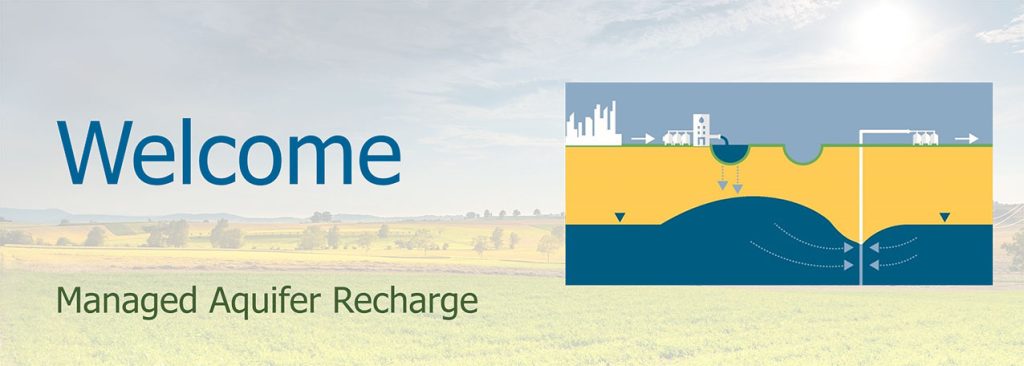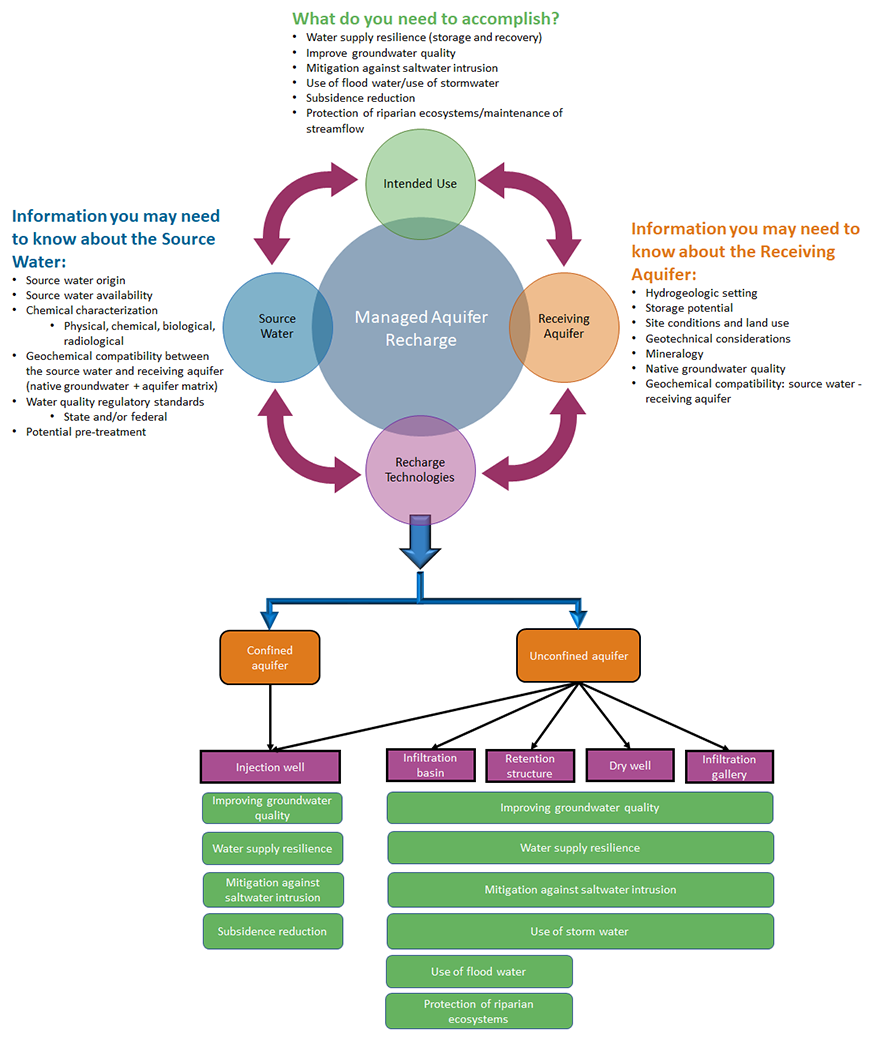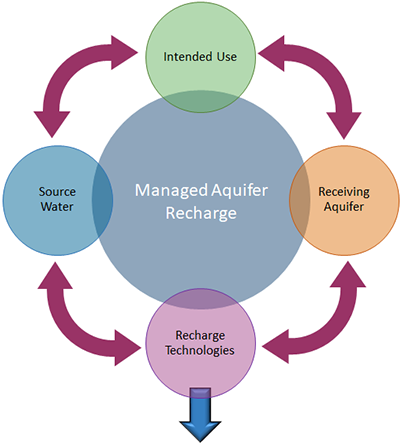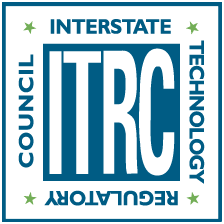
The combination of climate change and growing demand for fresh water has resulted in an increase in the vulnerability and scarcity of freshwater supplies around the world. Managed Aquifer Recharge (MAR) is a process that is becoming an increasingly important method for improving and supplementing subsurface freshwater storage and ecosystems with an additional benefit of reducing flood risk, managing stormwater, mitigating subsidence, and controlling saltwater intrusion.
This Managed Aquifer Recharge guidance provides a basic understanding of MAR and its applications through the presentation of:
- A model of the MAR process illustrating the four key components of MAR and their interaction.
- An overview of the applications of MAR and the role in addressing climate change impacts through sustainability and resilience in water resources management.
- Information on the key components of MAR and the critical considerations for each component in the design of a MAR project.
- Case studies illustrating the various applications of MAR.
Click on the shapes and subject areas on the following figure to go to that section of the Guidance


Published by the Interstate Technology & Regulatory Council, December 2023
- Confined Aquifer
- Injection well
- Go to Injection well section
- Improving groundwater quality
- Water supply resilience
- Mitigation against saltwater intrusion
- Subsidence reduction
- Unconfined Aquifer
- Infiltration basin
- Go to Infiltration basin section
- Improving groundwater quality
- Water supply resilience
- Mitigation against saltwater intrusion
- Use of storm water
- Use of flood water
- Protection of riparian ecosystems
- Retention structure
- Go to Retention structure section
- Improving groundwater quality
- Water supply resilience
- Mitigation against saltwater intrusion
- Use of storm water
- Use of flood water
- Protection of riparian ecosystems
- Dry well
- Go to Dry well section
- Improving groundwater quality
- Water supply resilience
- Mitigation against saltwater intrusion
- Use of storm water
- Infiltration gallery
- Go to Infiltration gallery section
- Improving groundwater quality
- Water supply resilience
- Mitigation against saltwater intrusion
- Use of storm water


